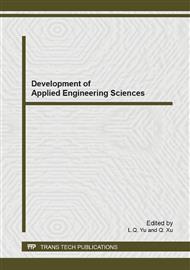p.182
p.187
p.193
p.197
p.201
p.205
p.208
p.212
p.216
Complex Wireless Sensor Network Routing Strategy for Information Rapid Transmission
Abstract:
For wireless sensor networks for energy requirements are very high and limited node energy characteristics of wireless sensor networks to improve information transfer for the purpose of quick study proposes a wireless sensor network nodes spread weighted routing strategy. The simulation result were weighted node degree technical analysis, analysis of the advantages from the principle of routing policy change, thereby effectively increasing the network lifetime and improve the data transfer rate and reduce the transmission delay, is more suitable for large-scale wireless sensor network.
Info:
Periodical:
Pages:
201-204
Citation:
Online since:
October 2014
Authors:
Price:
Сopyright:
© 2014 Trans Tech Publications Ltd. All Rights Reserved
Share:
Citation:


